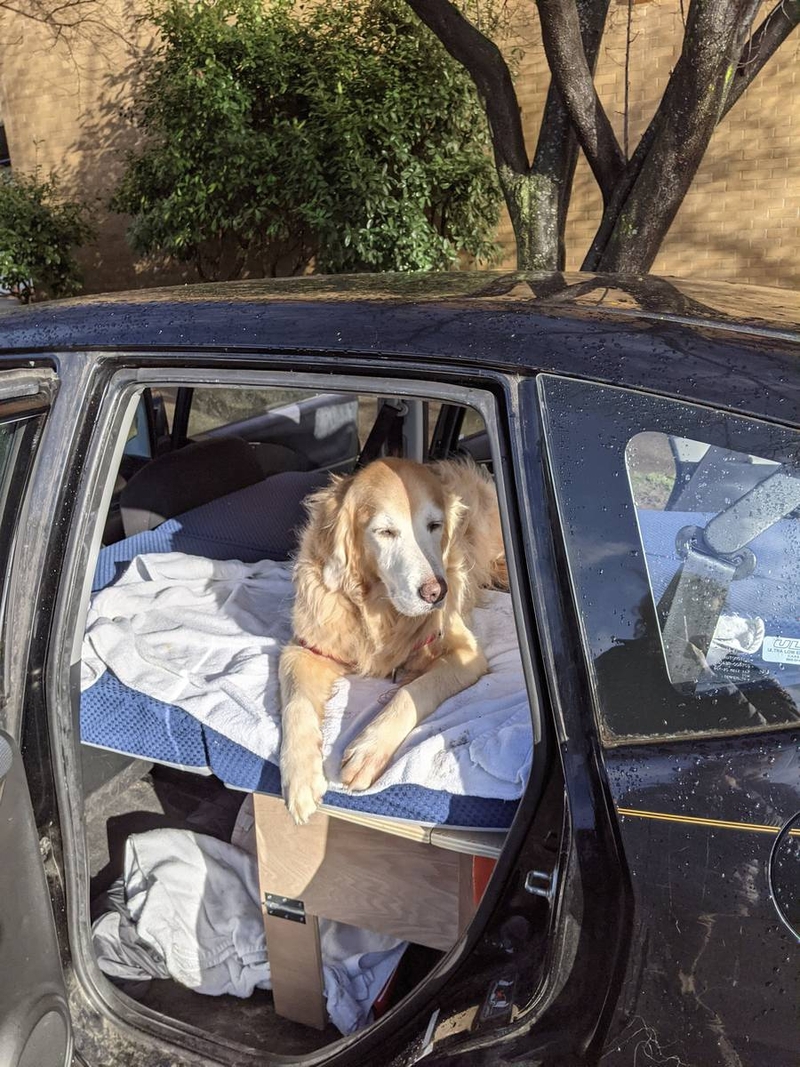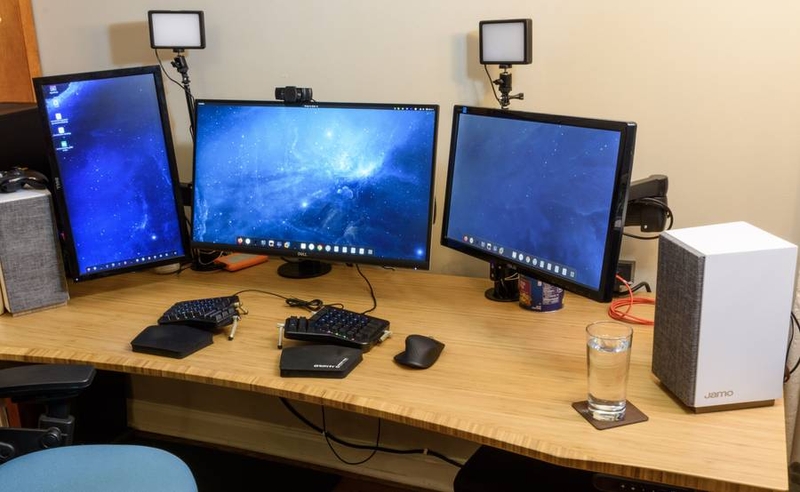The people who use our boards.
364 interviews since 2018
The people who use our boards.
Michael Sobrepera
PhD Candidate | RoboticistWho are you, and what do you do? What do you like to do outside of work?
I’m Michael, a PhD candidate at the University of Pennsylvania who builds and tests robots. For the past few years, I have focused on exploring how social robots can be used to augment telepresence for upper extremity rehab and how computer vision can be leveraged to build automated upper extremity motor assessments. I work across the entire robotic stack: hardware design, prototyping, basic electronics, software on the robot, backend in the cloud, and some machine learning. Lately, I spend most of my time developing, running, and analyzing studies with people interacting with robots.
I am excited for how robots can be used to enable people to do what they cannot do today. My PhD work focuses on using robots to aid in providing rehab care that otherwise would not be accessible. But more broadly, I think robotics will enable new ways of aging independently, providing medical care, growing food, transporting goods, etc. that are totally different to what we are able to achieve today. I think the applications where robots interact directly with people are probably the most challenging and most interesting.
Whether at or outside work, I really enjoy making and creating things. The first few years of my PhD, I spent a huge amount of time on the design, fabrication, and programming of the robot that I now use to test how people respond to social robots in telerehab interactions. Beyond research, I am interested in how businesses are built to solve the pains that people have. Last year a pair of friends and I built a company to improve the comfort, usability, and data gathering capabilities of hand wrist orthoses. Our venture won the Penn Rothberg Catalyzer and the Penn Wharton Startup Challenge. In the end, we determined that more basic research was needed before commercialization, but we learned a lot. Occasionally, I build crazy stuff, too, like a bed I recently built into my little Honda Fit. I drove it cross-country and back with my dog, both of us sleeping in the car. That was a lot of fun! I really enjoy that sort of hands-on engineering.

As far as my other interests go, I have been passionate about sailing since I was a little kid. For a few years, I was sailing with Liberty Sailing Club on the Delaware River in Philadelphia. Nothing clears the mind like focusing on a race start as the skipper on a boat, wind blowing, and six other boats vying for a spot on a short starting line. When I’m not on the water or in the lab, I try to get out as much as possible with activities like hiking, playing tennis, and grilling. In a few short months, I’m moving to Seattle to finally live with my wife (we spent the last year apart) who is midway through her residency in interventional radiology at the University of Washington. I am looking forward to enjoying the sailing and hiking out there and I know my dog, Abita, will love the swimming.

What hardware do you use?
I have a custom-built PC on my desk—it has an i7-8700k, an RTX 2070, 32 GB of RAM, and a bunch of NVMe and HDD space, cooled with some big Noctua fans and a heatsink, all inside of a Fractal Meshify C case. I built the system a while back, and it has held up well. Those Noctua fans do a fantastic job of keeping it running smoothly. In addition to working, I occasionally play video games on the computer, and they render beautifully.

I have a long 80” Uplift sit/stand desk in bamboo with industrial-looking metal legs. On top of the desk, I have three totally mismatched monitors. The one in the middle is a newer 4K Dell S2721Q. It is amazing how much of a difference the bigger 4K screen has made to my work. I can actually see the text on the screen, and I am taking way longer to fatigue. I also have two Jamo speakers, which are a bit large for a desk, but I really enjoy listening to music while I work. All three monitors are on articulating arms, which allows me to transition from sitting to standing quickly and keep a decluttered desk.
I use an ErgoDox EZ as my keyboard and finally upgraded from a little travel mouse to a Logitech MX Master 3 mouse.
Since we all spend so much more time on video calls now, I have a Logitech C920 webcam. I also have lights mounted on my desk. It’s truly incredible what a difference good lighting can make on video calls.
I use a Steelcase Leap V2 chair, recycled from Crandall Office Furniture, when sitting, and either a rocker board or a foam mat when standing.

In the lab, traveling with the robot, working outside, etc. I use a Dell Precision 5540. The bright screen, light weight, high performance, and native Linux support make it a good solution for mobile work. However, the overall ergonomics and heat management of a laptop are somewhat limited.
Of course, the most important piece of hardware is the robot that I work with.
And what software?
I mostly work in Linux, Ubuntu 18 and 20. When writing code, I almost exclusively use Neovim (dot file: https://github.com/mjsobrep/config_files/blob/master/nvim/init.vim), often running in tmux. These days, CAD work is done in Onshape. Most of my code is in Python, although I have been doing a lot of data analysis in R and making heavy use of RStudio. When working on robots, I rely heavily on the Robot Operating System (ROS). All of my technical writing is in LaTeX, either in Neovim or Overleaf. Zotero is a must for keeping track of journal references. I keep my code tracked using Git with GitHub. I still use Windows for Office, Lightroom, and some corporate software in VMware Workstation.
The server backend for the robot that I use runs on Node.js, all in TypeScript, with Redis and Postgres. The frontend that is used for control is built with React and TypeScript.
Even with all my tech, I still enjoy using lightly dotted notebooks like the Leuchtturm1917 dotted notebook and the Rhodia Dot Reverse Book. Being able to quickly take notes one-handed and sketch out ideas free-form is much easier to me than any notetaking software I have found so far.
What’s your keyboard setup like? Do you use a custom layout or custom keycaps?
When I am working at home, I use an ErgoDox EZ, black, with backlit keys. I have modified the keyboard layout but still use a standard QWERTY layout at the core.
Rather than styling with keycaps, I use the key backlights to indicate function on the current layer. That lighting may not be the most visually attractive setup, but it is practical. I have also moved a few keycaps to remind me of non-standard functions. I rarely switch completely away from my main layer, but instead toggle on other layers while I am typing, as I need them. This enables me to stay on my home row, using my thumbs to bring up layers to access symbols. It took me a while to find a use for the big buttons in the middle of the keyboard, but I now have them mapped to change workspaces. I had never been able to get into workspaces before but am now using them heavily.

What would be your dream setup?
I am pretty happy with my current setup. I would like to add a subwoofer to give my speakers more body and upgrade my two older monitors to get better resolution and viewing angles. The lights that I use for video calls could probably be upgraded too. Beyond that, things would just get silly. I mean, who wouldn’t want a laser cutter, 3D printer, and CNC mini mill next to their desk?!





